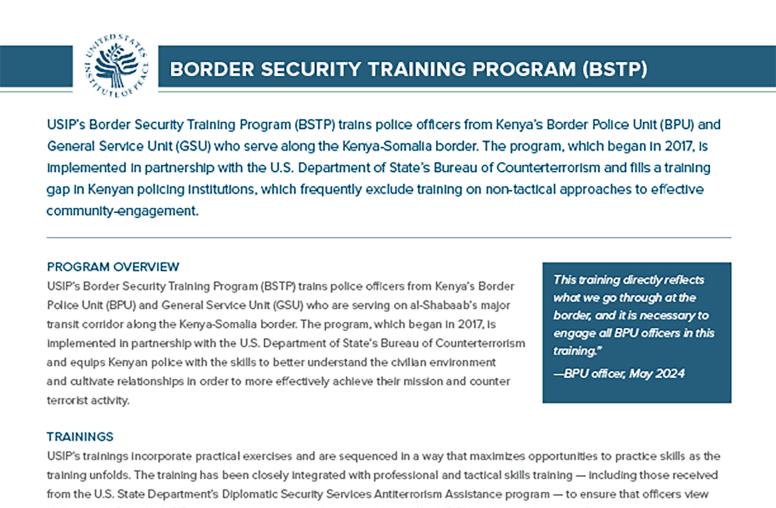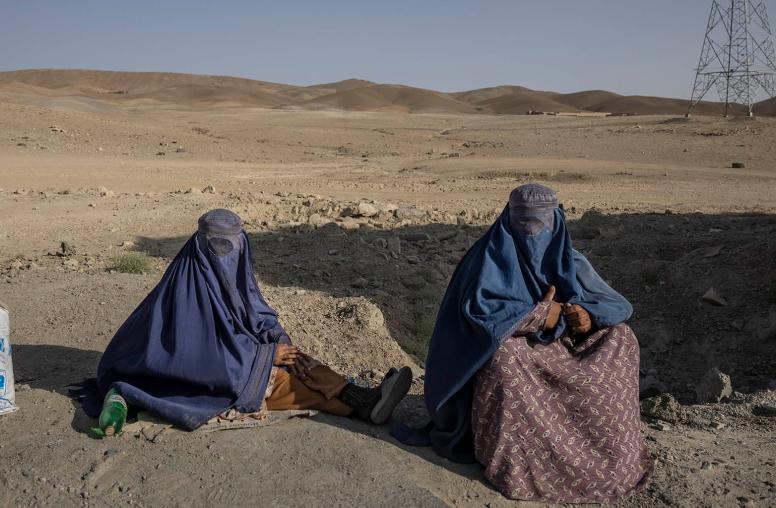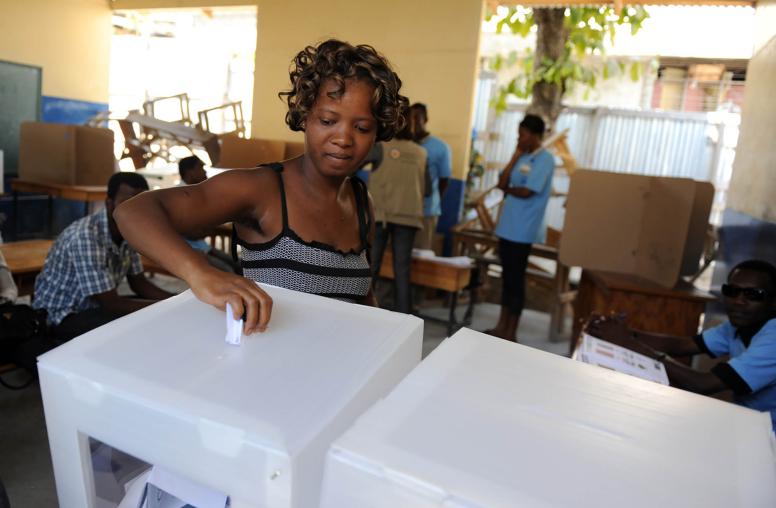How Women Are Using Technology to Advance Gender Equality and Peace
Despite progress, women still need more training and access to technology to boost their digital power.
From Afghanistan to Sudan, women in conflict areas are increasingly turning to technology to build peace and reduce gender inequality. Just as smart phones and mobile internet facilitate key functions of daily life, they also bring the world women’s voices once confined to the home or marketplace. It is a development with tremendous promise that the international community needs to support by widening access to technology, reducing social barriers to it and providing training that boosts proficiency.

The global attention paid to Sudan’s protest movement, for example, stemmed in no small part from communication via WhatsApp, organizing over Facebook, and posts by Instagram influencers. Women unable to join the main protests—including rural women, who are particularly hemmed in by deeply rooted patriarchal structures—recorded and shared their activity in support of the movement on Facebook and Twitter. A private Facebook group originally formed to discuss relationships evolved to expose the abuses women faced during the protests and to raise funds for the revolutionary movement. While the Sudanese government tried to block social media in response, women used virtual private networks (VPN) to hide their locations and forge ahead with the work.
Technology also has proved an effective organizing tool in support of the peace process in Afghanistan. For a while, the main form of communication between the talks’ facilitators and Afghan civil society was Twitter. Twitter can often be a one-sided approach to communication, but Afghan women quickly organized and strategized to engage the facilitators in a productive way allowing for a conversation. Women used Twitter to engage with a U.S. Congressional hearing on women’s inclusion in peace and security and it offered a direct line to policymakers and peace-talk facilitators that otherwise would not have existed.
In addition, Afghan women and diaspora organizations are developing social media guides to create uniformity in women’s messaging to the Taliban. #AfghanWomenWillNotGoBack has been a trending hashtag by the Afghan Women’s Network, the largest umbrella organization of women in Afghanistan. #MyRedLine has been used by Afghan women to record short video clips and share their red lines for any peace agreement.
The evolution of these platforms is no small add-on to efforts to end the conflict. Research has shown that to achieve a more durable peace, women must have a stake in shaping the process, and that gender equality must be advanced as a part of it. Although the pendulum of social media continues to swing, creating both opportunities and risks for peace and democracy, its role in the struggle for women’s inclusion in civil society—and gender equality generally—has only grown. This is particularly so because technology provides an avenue for women’s engagement in cultures where their physical mobility is restricted and voices intentionally muted.
The Digital Gender Divide
While advancements have been promising, women, on a global average, have less understanding of technology, fewer digital skills, less presence on online platforms and are less likely to own mobile or technological devices. Hurdles to women’s and girls’ digital literacy include access and affordability challenges, lack of education, and socio-cultural norms. Women on average are 26 percent less likely than men to have a smart phone: In Africa, the proportion stands at 34 percent and in South Asia, it doubles to 70 percent.
Of course, access to technology and social media alone goes only so far.
Unless women can use these tools proficiently to shape strategy and narratives, they won’t be able to participate meaningfully in peace and security matters. Retweeting a photo, for example, is not enough.
From UNICEF’s Girls Education Initiative to the Obama administration’s Let Girls Learn Initiative, global efforts to address gender divides in literacy and education are a key pillar of development strategies. However, not much attention has been paid to the gap in digital literacy, despite its potential to reinforce or exacerbate other socio-economic, political and security disparities.
When attention is paid, the effects are notable. A 2017 study on women’s digital literacy in Indonesia, for instance, shows that teaching women how to create content and share information on digital media can open more opportunities for economic and professional growth—like access to online banking—while simultaneously reducing gender inequality. For instance, women in Indonesian digital literacy trainings learned how to market products on digital platforms, helping them compete in online trade markets. In Kenya, the introduction of M-PESA, a mobile banking system, revolutionized women’s access to financial institutions and “cash.” M-PESA not only created new opportunities for women to open bank accounts, which was previously limited, but allowed them to move about cities without the worry of carrying cash.
Technology’s Threats
To be sure, the effects of technology on women aren’t all positive. Besides well-documented efforts by extremists to lure women online, tech tools can actually support restrictive gender norms. In Saudi Arabia, for example, the Absher App has been used by men to track women’s whereabouts and activities. Access to digital technology can even become an excuse to curb women’s physical mobility if they can communicate or generate income without leaving home.
Involvement in the digital world can also create unprecedented risks: In Iran, a teenage girl was arrested for posting a clip of herself dancing on Instagram; private memories are frequently used for public indictment; women activists fighting for gender equality are more easily targeted given increasingly public online profiles; video clips of Afghan women activists have been edited to change their intended messaging to support the Taliban, confusing the world and hindering their work.
And while authoritarian regimes have long quashed social media advocacy, spread false information online and cracked down on technological platforms to disrupt movements or activities, their suppression disproportionately affects women.
A Way Forward
Still, on balance, women’s ability to employ technology and social media proficiently—and protect themselves from targeted online attacks and propaganda—is a critical building block for peace and gender equality.
But as noted, this requires adequate digital literacy. As organizations that implement peacebuilding programs work to close gender gaps in conventional literacy, they should also consider strategies to shrink the disparity regarding technology.
Steps to boost women’s digital power for activism and peacebuilding should include:
- Integrating digital literacy skills into women’s programming. This should go beyond simple introductions to technological devices and platforms to learning how to use them strategically to best support their efforts.
- Highlighting techniques that better protect women’s identities where necessary. In contexts where governments crack down on social media and technology use, women must be given better training to protect themselves as the “easier targets.”
- Supporting and funding programs that help women develop technology-based businesses or organizations. An example would be SafeCity, a woman-owned company that harnesses open source information to map zones of harassment in India.
- Advocating for women’s use of and access to technology and social media where it may be restricted. Attention should be paid to communities that hinder women’s use due to economic or social standards; these are the communities where women could benefit from its power the most.
Technology and social media can be powerful tools for women and girls to engage in democracy, civic action and peacebuilding, as well as to fight for their basic rights and gender equality. Adapting programming and investing in digital literacy for women and girls will be key to ensuring that they can meaningfully participate in these newly opened public spheres.
Danielle Robertson is a senior gender specialist the U.S. Institute of Peace. Mena Ayazi was previously a research assistant for gender policy and strategy at the Institute.



